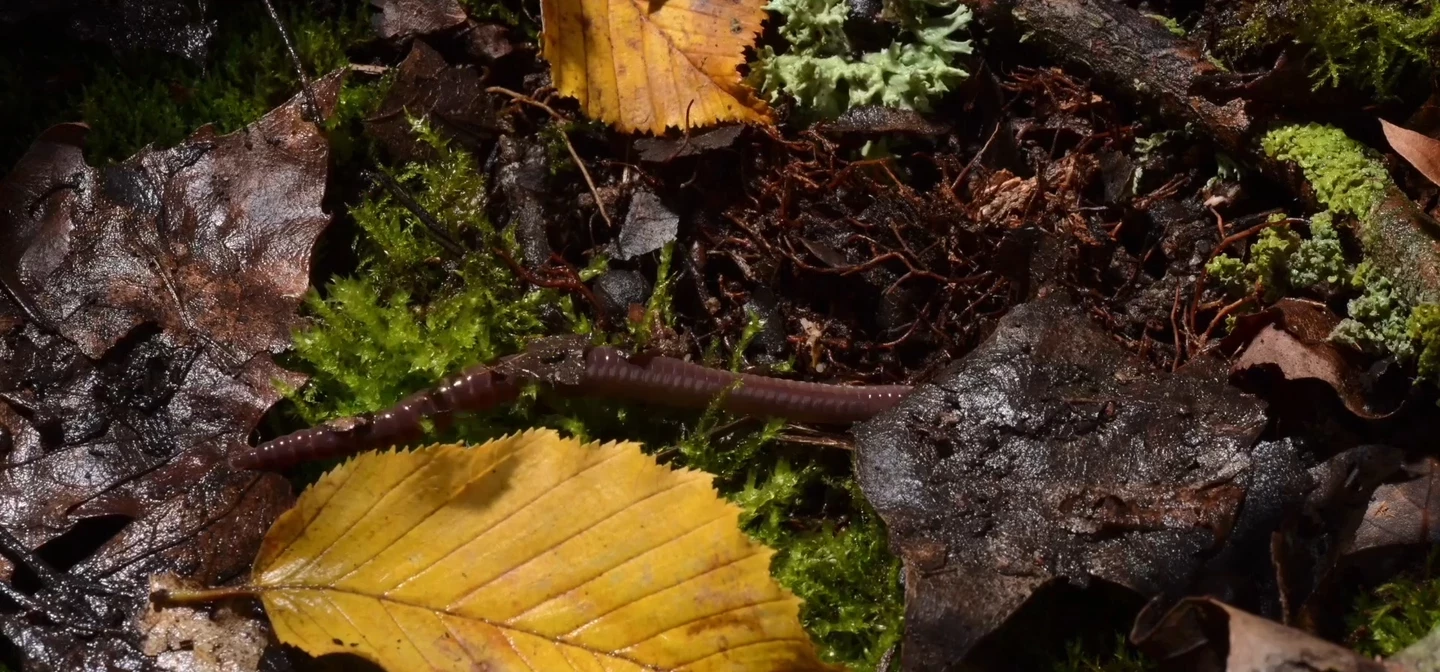
Soil is Alive!
We are unearthing the value of the soils in the Royal Parks, through an action plan of research, conservation and landscape management within the parks.
Soil is the world’s most biodiverse habitat but is the least appreciated and explored. It is alive with more than half of the world’s species living in soil, but it tends not to feature prominently in debates about biodiversity and the climate emergency, because we simply don’t know that much about it.
|
On this page |
So why is soil so important? And what do the Royal Parks’ soils do for London?
Soils are a vital part of our ecosystems, informing the life cycles of plants and animals, the water cycle, the carbon cycle, and pretty much every natural process on the planet.
In their context within one of the world’s busiest cities, the ‘services’ that the Royal Parks’ soils provide include:
-
Soil is the medium in which all of the Parks’ plants and trees grow (with the exception of a minority of pond plants).
-
Soil provides habitat for a huge variety of micro and macro-organisms, from bacteria and protozoa to worms, nematodes, springtails and fungi. One-quarter of all of the organisms in the world live in soil - each cubic metre of topsoil can contain up to 1.5kg of living organisms! Many of these do important jobs in our ecosystem, including recycling organic waste into nutrients for plants and trees to grow.
-
Soil modifies the atmosphere, emitting and absorbing, storing and filtering gases including pollutants and carbon dioxide, helping to improve the quality of the air in and around the Parks.
-
Soil stores and slows the movement of water, helping to prevent flooding in times of heavy rainfall as well filtering nutrients and minerals and helping to purify our water.
-
Soil acts as carbon pool to both absorb and store carbon from the atmosphere. The majority of the UK’s terrestrial carbon is held in peatlands and their associated habitats, but parkland soils also have a role to play.
-
Soil provides a physical and cultural environment for all of people’s activities within the Royal Parks – we walk, exercise and play on the soil.
-
The Parks’ soils act as an archive of our geological, pedological and archaeological heritage. London’s parks form most of the city’s land that hasn’t been built on, and the 5000 acres of the Royal Parks contain a wealth of information about London’s heritage. While the Parks’ landscapes have been altered over the centuries, their soils contain rich evidence of London’s history.
Soil is an ecosystem
You’ve probably heard soil being described as ‘sandy’ ‘clay’ or ‘loam’. The relative proportions of sand, silt and clay particles in a soil determine its texture and vary according to the underlying geology of a place.
But soil is not just sand, silt or clay – it is a natural habitat. It is alive and when healthy is teeming with life. Soil also contains organic matter – living plants, animals and fungi and the decaying matter that they recycle and feed on, as well as air and moisture.
Soil structure is created as the mineral particles and organic matter clump together into small soil blocks. These are stacked around one another leaving void spaces of various sizes, called pores, which allow the movement of air and moisture through the soil and provide spaces for colonisation by soil microbes and microorganisms. This structure is essential to many important soil functions, including aeration, drainage, water storage, root development of plants and microbial activity.
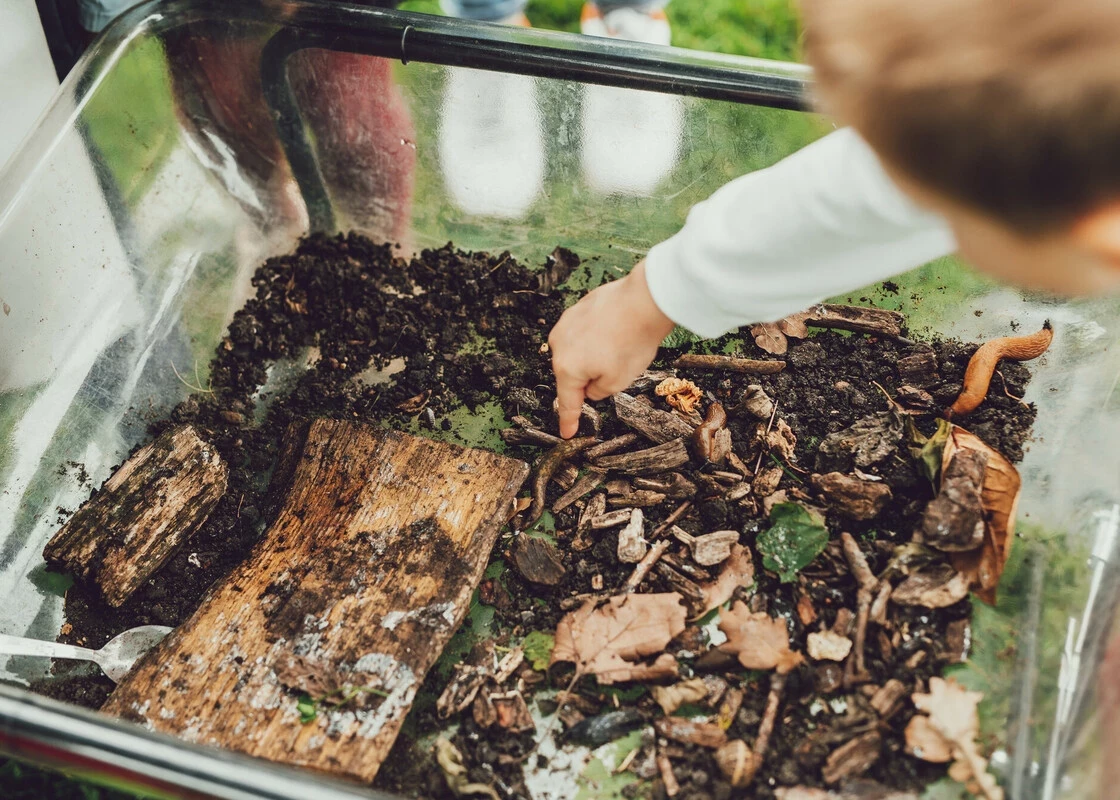
The different sized particles in sandy, clay or loam soils stack more tightly or loosely, creating differences in how much moisture, air and nutrients that they hold, and supporting different varieties of plant life. The texture of a soil strongly influences its physical and chemical, and therefore, also its biological and horticultural properties. For example, soils with a high proportion of clay particles are well-known for high-nutrient retention but, are prone to waterlogging in wet weather if compacted, and cracking in dry weather. Soils with a high proportion of sand particles are freely draining, which means that nutrients can easily wash through them, and are prone to erosion by wind and rainfall.
Knowing the type of soil in an area informs our knowledge of what plants and habitats it can host. Wildflower meadows, for example, grow best in nutrient-poor, free draining soils, whereas marginal plants prefer the water-retentive properties of silty or clay soils.
Acid grassland – a nationally scarce habitat, but that can be found in some of Royal Parks (Richmond Park, Bushy Park, and to a lesser extent parts of Greenwich Park and Primrose Hill), is even more specialized. It grows on open areas of free-draining sandy or gravel soils where the reduction in nutrients over the years has resulted in an acidic pH. It is important as a habitat for many ground-dwelling and burrowing insects, including mining bees and wasps and yellow meadow ants, as well as a wealth of other species such as skylarks and meadow pipits.
Soil health and people
The Royal Parks welcome millions of visitors every year – that’s a lot of footfall! And with high footfall comes the greatest difficulty the parks face when it comes to maintaining healthy soils: compaction.
Compaction occurs from downward pressure on the soil – predominantly from human use. Anytime a force comes into contact with soil can cause compaction, but in the Royal Parks it is predominantly from people walking. The pressure squeezes the soil, damaging its structure by reducing the pore spaces that should hold air and moisture. Use of the parks by people results in compaction of the soil, which reduces oxygen and soil biota and increases waterlogging. A healthy, well developed soil will consist of around 55% air, water and organic matter by volume, and only around 45% mineral. A compacted soil, on the other hand, can be up to 85% mineral, and only 5% each of air, water and organic matter.
Compaction and its knock-on effects put stress on plants and trees, resulting in poor growth and even death. As a result, the variety of plant life and diversity of habitats in the parks can decrease, to the detriment of the animals – large and small – who live there. Reduced biodiversity would also affect people’s enjoyment of the parks – many of our visitors come to enjoy nature, and without a variety of plants, trees and wildlife, the parks would be a less enjoyable place to be.
In order to sensitively manage the Parks to preserve them for future generations, we need to balance the use by people with the need to preserve and enhance biodiversity. We know that some visitors come to the Parks to play sport or to attend festivals and events, whereas others might want a quiet walk in nature or to sit and watch the birds. We also know that biodiverse parks are more appealing to visitors, so we want to maintain a wide variety of trees, plants and creatures to enable visitors to feel immersed in nature when they visit. We have no plans to reduce sports provision, recreation space and large and small-scale events. Instead we are seeking to better understand our landscapes, including the soil beneath them, to inform our management plans and identify opportunities for habitat creation, restoration and enhancement.
What are The Royal Parks doing to maintain and improve our soils?
The Royal Parks has detailed management plans for each of our parks. Our park management plans carefully consider each landscape as a whole, in order to find a balance of visitor use and biodiversity.
Many of the sports, events and informal recreation taking place in the Parks are reliant on our extensive areas of closely mown amenity grass. High usage tends to reduce the health of the soils beneath these areas – though areas beneath large-scale events such as Winter Wonderland and British Summertime concerts are rotovated and re-turfed after each event. Soils beneath wilder and meadow areas tend to be much healthier than those under close-cropped lawn. To encourage the development of healthy soils we allow other areas of the parks to grow as meadow grassland. Every year we also create new habitats and restore and enhance others, to provide a tapestry of habitat from wildflower meadow to waterside planting and woodland to wetland among the areas of amenity grass. So much of this valuable conservation work is made possible by players of Peoples Postcode Lottery.
Recently we have created swales in Hyde Park and The Regent’s Park to help manage rainfall and reduce waterlogging of the soil in downhill areas, as well as providing new wetland habitats for wildlife.
We protect the root-zones around many of our valuable veteran trees from compaction through installation of fencing to prevent people from getting too close. You may have also noticed circular areas of long grass around many other trees across the parks. This isn’t us being lazy about mowing, but done deliberately to reduce compaction and to increase the amount of organic matter available to the soil creatures living below.
New trees are planted throughout the parks every year and as part of the planting process we break up compaction through to the sub soil in planting areas, to improve the health of our soils as we plant.
During the covid pandemic, increased use of the parks and the need for social distancing meant that in many areas soils either side of our pathways suffered from compaction and erosion. We have been restoring pathways throughout the parks and de-compacting areas around these to improve soil health.
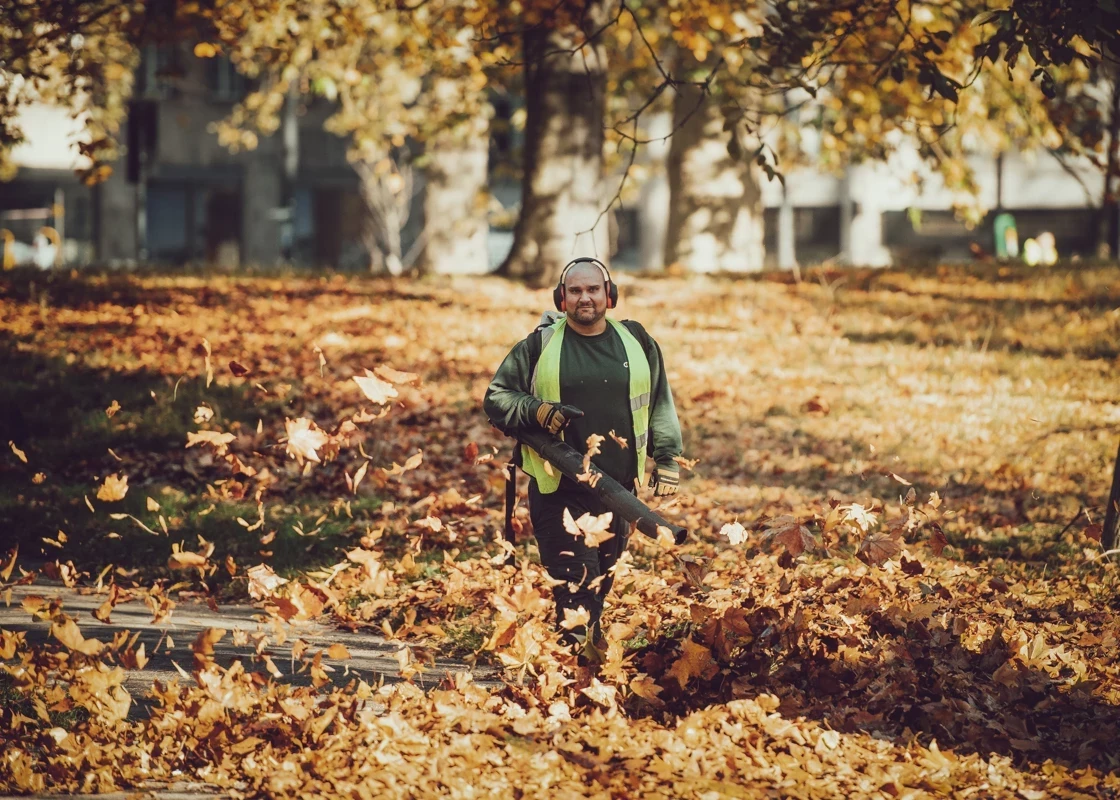
All leaf-fall collected across the parks is turned into green compost, and used to improve the soil throughout our ornamental flower beds. Recently, this included collecting up more than 1 million floral tributes to the late Queen Elizabeth II, with the help of more than 200 volunteers, to create green compost, which has been helping our floral displays to bloom beautifully.
In many of the parks we are moving towards leaving fallen leaves in-situ where appropriate, so that these can be broken down into nutrients by soil-dwelling creatures. While this might look messier at first appearance the health benefits for our soils, and the plants and creatures that depend on them is immense.
We have begun a process of assessing and adjusting the planting of our floral displays to provide a balance of pollinator plants and more exotic species, and also to reduce digging. The latter can both degrade the structure of the soil, and release carbon into the atmosphere, so planting a greater proportion of perennial plants (plants that live more that two years) rather than bedding species (short lived) will help to preserve soil health and reduce our carbon footprint.
As part of our Help Nature Thrive project, made possible thanks to wonderful players of People’s Postcode Lottery, we have undertaken in-channel meandering along the path of the Beverley Brook in Richmond Park. Utilising dead wood as a construction material we created a narrower channel that captures sediment on one side and erodes on the other, to re-establish meandering and the diversity of wetland habitat which accompanies it.
Along the lakesides in many of the parks we have created new marginal planting areas, to help stabilise the soils at the water’s edge.
In Bushy Park we have undertaken a major desilting project in the streams in the Woodland Gardens – removing silty sediment that has been deposited in unhelpful places to improve flow and oxygenation of the water, and using the material removed to create new marginal planting habitats along the banks. Much of this valuable conservation work was made possible by players of People’s Postcode Lottery through the Help Nature Thrive project.
All soil and substrates brought into the parks for landscaping or construction works are carefully vetted, including soil on plants. This helps to protect the health of our existing soils from important pests and diseases.
How can visitors help?
There are many ways that you can get involved and help save our soil, from small actions when visiting to parks, to signing up to help with our research:
Tread carefully
Wherever possible, stick to designated paths and avoid cut-throughs, particularly in our Sites of Special Scientific Interest: Richmond and Bushy Parks.
Where you find areas of long grass or wildflower meadow, these are wonderful habitats for invertebrates and small mammals, and provide forage for birds, so avoid walking across these where possible. In Richmond and Bushy Parks, look out for mounds and tussocks within our extensive swathes of acid grassland. These are ant hills created over centuries by yellow meadow ants, and are part of the grassland ecosystem, so please do avoid treading on them.
Leave no trace
Put litter in our bins, and pick up after your dog.
Learn with us
Become a citizen scientist or volunteer and have fun while learning in a beautiful environment.
Stay up to date
Sign up to our newsletter to be the first to know what is happening in our parks.
The future of soil preservation in our parks
Our action plan for soil
In addition to these existing measures for maintaining and improving soil health across the parks, we are developing our action plan for soil.
Over the next seven years, the Royal Parks will be building on our existing actions for soil health to create a more formal strategy for looking after our soils. The actions that we will be taking include:
Gaining a better understanding of our natural resources, including soils:
- Commissioning more expert surveys of soil health, composition and structure across the Parks to better understand what lies beneath our feet, and to aid planning of our habitat and biodiversity initiatives.
- Planning further soil-related citizen science projects to record and monitor data about soil and soil-dwelling creatures, helping to expand out surveying and monitoring capacity.
- Exploring the case for change in event restoration work schedules to include deeper mechanical aeration of soil before re-turfing.
Conservation and climate resilience
- Continuing to protect root zones of veteran trees, and adjusting mowing to improve soil health in root zones of our younger trees
- Identifying areas for reduced mowing and meadow grassland
- Reducing leaf collection to allow composting in-situ by soil creatures
- Further reductions in digging in horticultural beds, through greater proportion of perennial plants and fewer seasonal bedding displays, and monitoring the impact of these interventions on soil health
- Use of grazing instead of mowing in selected locations to reduce compaction
- Installation of more swales and rain gardens to attenuate movement of water
Sustainable access to nature
- Use of reduced mowing to discourage walking in sensitive areas.
- Improved signage to divert visitors from desire lines (short cuts that result in the wearing down of vegetation and compaction of soil).
- Improved wayfinding and interpretation to encourage use of paths and picking up after dogs.
- Better communication with our visitors about the importance of healthy soils for biodiversity, and how visitors can help to keep our soils healthy.
-
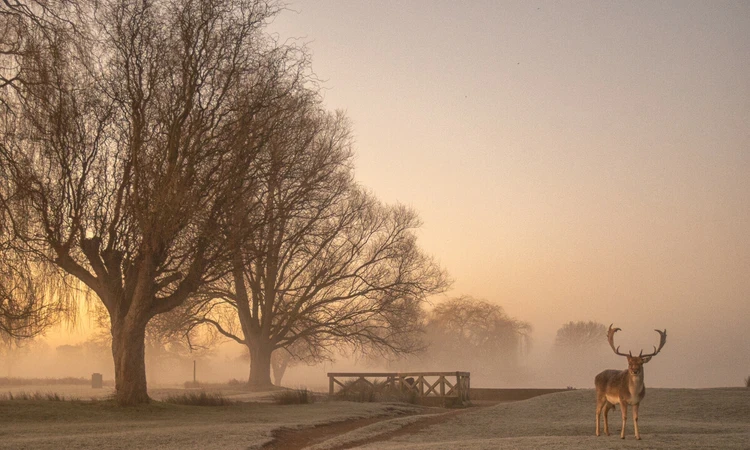
Nature & wildlife
Life flourishes in the Royal Parks, and we want to keep it thriving for decades to come.
-
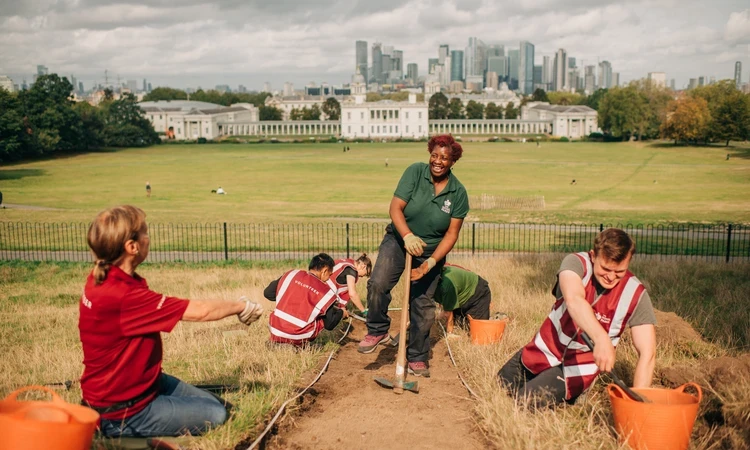
Volunteer with us
Would you like to volunteer with us? Our volunteers play a vital role in looking after the parks and support a wide-range of activities.
-
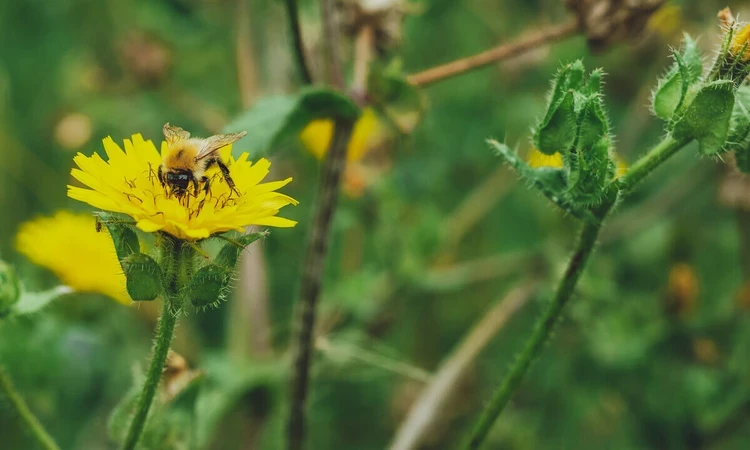
Sustainability
Our proactive approach to sustainably managing London's Royal Parks